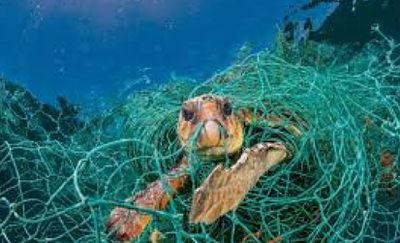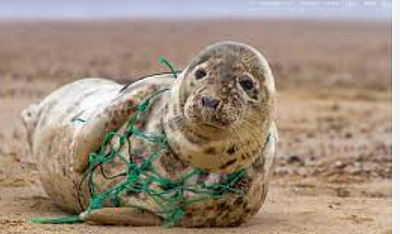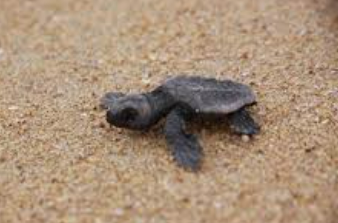
英検1級取得者によるオンライン個別指導のプロ
英語パーソナルジム HIET(ヒート)/ High Intensity English Training
- お電話での
お問い合わせ - 090-3825-5237
コラム
英文記事を読む「海洋プラスティックゴミ問題」 日本人がプラスティックを食べるバクテリア発見! 英国ガーディアン紙
2023年11月17日 公開 / 2023年12月2日更新
目次
Agree or disagree: Is Japan doing enough to reduce the amount of plastic waste?
今回は、英検と大学入試で出題が予想されるトピックとして
「海洋プラスティックゴミ問題」を取り上げます。
英検ライティングと2次面接対策として、
ここで提示する論点整理・解決策をノートにまとめれば万全の対策となるでしょう。
なお、本トピックはライティングとリーディングのいずれも出る可能性が高いです。
また、先日配信された英国ガーディアン紙、
日本人によるプラステックを食べるバクテリア発見
の記事も掲載しました。
【東京大学2019年 】以下の下線部を英訳せよ。
世界中でプラスチックごみを減らす動きが活発だ。食品などのプラスチック製容器や包装をなくしたり,レジ袋を有料化したりするのはもっとも容易にできることだろう。それらを紙製品や生分解性の素材に変えたりする動きも目立つ。 しかし,もっとも重要なのは,プラスチックごみによってかけがえのない自然環境を汚染しているのは私たち自身であると,私たちひとりひとりが日々の暮らしのなかで自覚することである。とはいえ,そうした意識改革が難しいことも確かで,先日もペットボトルの水を買った際に,水滴で本が濡れてはいけないと,ついレジ袋をもらってしまった。
[解答例]
what is most important, each of us should realize, in our daily lives, that we are the very ones that are polluting our valuable natural environment with plastic garbage.
[別解1]
the most important thing is for each of us to be aware in our daily lives that we are the ones that are polluting our precious natural environment with plastic waste.
[別解2]
what is most important is that each one of us realize in our daily life that it is we ourselves who are contaminating our irreplaceable natural environment with plastic garbage.
[別解3]
the most important thing is that, in daily life, each of us should realize that it is we ourselves that are polluting the precious natural environment with plastic waste.
[別解4]
What matters most is for us to recognize in our daily lives the fact that it is us who are polluting the precious environment by creating plastic waste.
【同年の自由英作文での出題】
プラスチック廃棄物による汚染問題に関する意見を書きなさい。
2019九州大・後期 60 words
2019広島市立大(解答欄約120~150words)
【英検1級(準1級)予想問題】
Agree or disagree: Is Japan doing enough to reduce the amount of plastic waste?
Agree:
Japan has made significant efforts to reduce plastic waste. The country has implemented strict regulations and initiatives aimed at curbing plastic consumption and improving recycling rates. Japan introduced a plastic waste reduction strategy in 2018, which includes a target to reduce single-use plastic bags by 25% by 2030.
In addition, the government launched a plastic resource circulation strategy in 2020, with the goal of promoting the 3R (reduce, reuse, recycle) approach. The Plastic Smart Campaign encourages businesses and consumers to reduce plastic waste, and many companies have embraced the initiative by adopting eco-friendly packaging and products.
Furthermore, Japan has been proactive in promoting innovative technologies, such as biodegradable plastics and plastic-to-fuel conversion, to address the plastic waste problem.
Disagree:
Despite some efforts, Japan still faces challenges in reducing plastic waste. While regulations have been introduced, they lack the necessary teeth for enforcement, resulting in limited compliance by businesses and individuals. The Plastic Waste Management Law, enacted in 2020, lacks specific targets for reducing plastic production and consumption. Japan continues to heavily rely on single-use plastics in daily life, with limited alternatives in place.
The country's recycling infrastructure is also struggling to keep up with the increasing plastic waste generation, leading to inefficiencies in recycling processes.
Additionally, Japan's per capita plastic waste generation is relatively high, indicating that there is much work to be done in changing consumption habits. Overall, Japan has made strides in addressing plastic waste, but more stringent regulations, consumer awareness, and investments in recycling infrastructure are needed to make a significant impact.
Agree:
日本はプラスチック廃棄物の削減に向けて重要な取り組みを行っています。この国は厳格な規制やプラスチックの消費抑制およびリサイクル率の向上を目指すイニシアティブを導入しています。日本は2018年にプラスチック廃棄物削減戦略を導入し、2030年までに一回限りのプラスチック袋を25%削減する目標を含んでいます。
さらに、政府は2020年にプラスチック資源循環戦略を開始し、3R(削減、再利用、リサイクル)アプローチの推進を目指しています。プラスチック・スマート・キャンペーンは企業と消費者にプラスチック廃棄物の削減を奨励し、多くの企業がエコフレンドリーな包装と製品を採用することでこのイニシアティブを受け入れています。
さらに、日本はプラスチック廃棄物問題に対処するために生分解性プラスチックやプラスチックから燃料への変換などの革新的な技術の普及を積極的に推進しています。
Disagree:
一部の努力があるにもかかわらず、日本はまだプラスチック廃棄物の削減に向けた課題に直面してます。規制は導入されていますが、適切な執行を欠いており、企業と個人の限られた遵守を引き起こしています。2020年に制定されたプラスチック廃棄物管理法は、プラスチックの生産と消費削減の具体的な目標を欠いています。日本は日常生活で一回限りのプラスチックを広く使用し続けており、代替策が限られています。
この国のリサイクルインフラも増え続けるプラスチック廃棄物の発生に対応するのに苦労しており、リサイクルプロセスに非効率をもたらしています。
さらに、日本の一人当たりのプラスチック廃棄物発生量は比較的高く、消費習慣を変えるためには多くの作業が必要です。全体として、日本はプラスチック廃棄物に取り組む一歩を踏み出していますが、より厳格な規制、消費者の認識、そしてリサイクルインフラへの投資が必要です。
What can we do to reduce the amount of plastic waste?
Reducing plastic waste is a critical environmental goal that requires a combination of individual and collective efforts. Here are some strategies to help reduce the amount of plastic waste:
Reduce, Reuse, and Recycle:
Reduce:
The most effective way to reduce plastic waste is to use less plastic. Avoid single-use plastics like plastic bags, straws, and disposable cutlery.
Reuse:
Whenever possible, reuse plastic items. For example, bring your own reusable shopping bags, water bottles, and containers.
Recycle:
Properly recycle plastics. Check your local recycling guidelines to ensure you're recycling the right items correctly.
Choose Alternatives:
Opt for products with less or no plastic packaging. Look for items in glass, metal, or cardboard packaging instead.
Choose reusable materials like cloth shopping bags, stainless steel or glass containers, and wooden or metal cutlery.
Support Plastic Reduction Policies:
Advocate for and support government regulations and policies that limit the use of single-use plastics and encourage recycling.
Plastic-Free Lifestyle:
Embrace a plastic-free lifestyle by making conscious choices in your daily life, such as using cloth diapers instead of disposable ones, buying in bulk to reduce packaging, and making your own cleaning products.
Proper Disposal:
Dispose of plastic waste properly. Ensure that it ends up in the right recycling bin and doesn't contribute to litter or marine pollution.
Participate in Cleanups:
Get involved in local community clean-up events to help remove plastic waste from the environment.
Educate and Raise Awareness:
Educate yourself and others about the environmental impact of plastic waste. Sharing information and raising awareness can lead to more responsible consumer choices.
Support Plastic Alternatives:
Support the development and use of biodegradable plastics and alternative materials that are less harmful to the environment.
Reduce Microplastics:
Be mindful of microplastics in personal care products (e.g., microbeads in exfoliants) and avoid them.
Choose Sustainable Packaging:
Support companies and products that use eco-friendly packaging or take-back programs to reduce waste.
Innovate and Research:
Support research and innovation in materials science to find sustainable alternatives to plastic.
Be Mindful of Clothing:
Synthetic fabrics shed microplastics when washed. Consider buying natural fibers and using a microfiber filter in your washing machine.
Reduce Food Waste:
By reducing food waste, you indirectly reduce plastic waste since much plastic is used in packaging food.
I belive individual actions can collectively have a significant impact. By making informed and sustainable choices, we can help reduce the amount of plastic waste and protect the environment.
プラスチック廃棄物を削減することは、個人と共同の取り組みの組み合わせを必要とする重要な環境目標です。プラスチック廃棄物の量を減らすためのいくつかの戦略を以下に示します。
削減、再利用、リサイクル:
削減:
プラスチック廃棄物を減らす最も効果的な方法は、プラスチックの使用を減らすことです。プラスチックバッグ、ストロー、使い捨ての食器などの一回限りの使用プラスチックを避けましょう。
再利用:
可能な限り、プラスチック製品を再利用しましょう。たとえば、再利用可能なショッピングバッグ、水筒、容器を持参しましょう。
リサイクル:
プラスチックを適切にリサイクルしましょう。地元のリサイクルガイドラインを確認して、正しい方法で適切にリサイクルしていることを確認しましょう。
代替品を選ぶ:
プラスチック包装の少ないまたは無い製品を選びましょう。ガラス、金属、ダンボールの包装の製品を探しましょう。
布製ショッピングバッグ、ステンレス鋼またはガラス容器、木製または金属の食器など再利用可能な素材を選びましょう。
プラスチック削減政策の支持:
一回限りの使用プラスチックの使用を制限し、リサイクルを奨励する政府の規制や政策を支持しましょう。
プラスチックフリーなライフスタイル:
使い捨ての代わりに布おむつを使用したり、包装を減らすために大量購入を行ったり、自分でクリーニング用品を作成するなど、日常生活で意識的な選択をすることで、プラスチックフリーなライフスタイルを受け入れましょう。
適切な廃棄物処理:
プラスチック廃棄物を適切に廃棄しましょう。それが正しいリサイクルボックスに入り、ごみや海洋汚染に寄与しないようにしましょう。
クリーンアップに参加:
地域のコミュニティクリーンアップイベントに参加して、環境からプラスチック廃棄物を取り除く手伝いをしましょう。
教育と意識の高揚:
プラスチック廃棄物の環境への影響について自分や他の人々に教育し、情報を共有し、意識を高めることで、より責任ある消費者の選択を促進しましょう。
プラスチック代替品の支持:
生分解性プラスチックや環境に優しい代替素材の開発と使用を支援しましょう。
マイクロプラスチックの削減:
個人用品(例:磨砕剤中のマイクロビーズなど)に含まれるマイクロプラスチックに気をつけ、それらを避けましょう。
持続可能な包装の選択:
廃棄物を減らすために、環境にやさしい包装を使用する企業や製品を支持しましょう。また、廃棄物削減プログラムを採用している企業もサポートしましょう。
革新と研究:
材料科学の研究と革新をサポートし、プラスチックの持続可能な代替品を見つける助けとなります。
衣類に気をつける:
合成の生地は洗濯時にマイクロプラスチックを放出します。天然繊維を購入し、洗濯機にマイクロファイバーフィルターを使用することを検討しましょう。
食品廃棄物を減らす:
食品廃棄物を減らすことで、食品包装に多くのプラスチックが使用されるため、間接的にプラスチック廃棄物を減らすことができます。
個人の行動が集合的に大きな影響を持つと信じています。情報を得て持続可能な選択をすることで、プラスチック廃棄物の量を減らし、環境を保護する手助けができます。
【英国 ガーディアン紙の記事】
‘We are just getting started’: the plastic-eating bacteria that could change the world
When a microbe was found munching on a plastic bottle in a rubbish dump, it promised a recycling revolution. Now scientists are attempting to turbocharge those powers in a bid to solve our waste crisis. But will it work?
by Stephen Buranyi
The Gurdian
September 2023
What Oda and his colleagues found in that rubbish dump had never been seen before. They had hoped to discover some micro-organism that had evolved a simple way to attack the surface of plastic. But these bacteria were doing much more than that – they appeared to be breaking down plastic fully and processing it into basic nutrients. From our vantage point, hyperaware of the scale of plastic pollution, the potential of this discovery seems obvious. But back in 2001 – still three years before the term “microplastic” even came into use – it was “not considered a topic of great interest”, Oda said. The preliminary papers on the bacteria his team put together were never published.
In the years since the group’s discovery, plastic pollution has become impossible to ignore. Within that roughly 20-year span, we have generated 2.5bn tonnes of plastic waste and each year we produce about380 million tonnes more, with that amount projected to triple again by 2060. A patch of plastic rubbish seven times the size of Great Britain sits in the middle of the Pacific Ocean, and plastic waste chokes beaches and overspills landfills across the world. At the miniature scale, microplastic and nanoplastic particles have been found in fruits and vegetables, having passed into them through the plants’ roots. And they have been found lodged in nearly every human organ – they can even pass from mother to childthrough breast milk.
Current methods of breaking down or recycling plastics are woefully inadequate. The vast majority of plastic recycling involvesa crushing and grinding stage, which frays and snaps the fibres that make up plastic, leaving them in a lower-quality state. While a glass or aluminium container can be melted down and reformed an unlimited number of times, the smooth plastic of a water bottle, say, degrades every time it is recycled. A recycled plastic bottle becomes a mottled bag, which becomes fibrous jacket insulation, which then becomes road filler, never to be recycled again. And that is the best case scenario. In reality, hardly any plastic –just 9%– ever enters a recycling plant. The sole permanent way we’ve found to dispose of plastic isincineration, which is the fate of nearly 70 million tonnes of plastic every year – but incineration drives the climate crisis by releasing the carbon in the plastic into the air, as well as any noxious chemicals it might be mixed with.
In the years after their discovery, Oda and his student Kazumi Hiraga, now a professor, continued corresponding and conducting experiments. When they finallypublishedtheir work in the prestigious journal Science in 2016, it emerged into a world desperate for solutions to the plastic crisis, and it was a blockbuster hit. Oda and his colleagues named the bacterium that they had discovered in the rubbish dumpIdeonella sakaiensis– after the city of Sakai, where it was found – and in the paper, they described a specific enzyme that the bacterium was producing, which allowed it to break down polyethylene terephthalate (PET), the most common plastic found in clothing and packaging. The paper was reported widely in the press, and it currently has more than 1,000 scientific citations, placing it in the top 0.1% of all papers.
But the real hope is that this goes beyond a single species of bacteria that can eat a single kind of plastic. Over the past half-century, microbiology – the study of small organisms including bacteria and some fungi – has undergone a revolution that Jo Handelsman, former president of the American Society for Microbiology, and a science adviser to the Obama White House, described to me as possibly the most significant biological advance since Darwin’s discovery of evolution. We now know that micro-organisms constitute a vast, hidden world entwined with our own. We are only beginning to grasp their variety, and their often incredible powers. Many scientists have come around to Oda’s view – that for the host of seemingly intractable problems we are working on, microbes may have already begun to find a solution. All we need to do is look.
● plastic pollution: プラスチック汚染
● plastic-eating bacteria: プラスチックを食べる細菌
● recycling revolution: リサイクル革命
● waste crisis: 廃棄物危機
● microbe: 微生物
● rubbish dump: ゴミ捨て場
● micro-organism: 微生物
● microplastic: マイクロプラスチック
● nanoplastic: ナノプラスチック
● fruits and vegetables: 果物と野菜
● recycling: リサイクル
● crushing and grinding stage: 破砕および研磨段階
● fibres: 繊維
● glass or aluminum container: ガラスやアルミニウム容器
● incineration: 焼却処理
● climate crisis: 気候危機
● journal Science: 学術誌 Science
● enzyme: 酵素
● polyethylene terephthalate (PET): ポリエチレンテレフタラート(PET)
● clothing and packaging: 衣類と包装
● microbiology: 微生物学
● small organisms: 小さな生物
● hidden world: 隠された世界
● intractable problems: 扱いにくい問題
● solution: 解決策
● grasp: 把握する
● variety: 多様性
● powers: 力
世界を変える可能性を秘めたプラスチックを食べるバクテリア
ゴミ捨て場でプラスチックボトルをかじっていた微生物が見つかったとき、それはリサイクルの革命を約束しました。今、科学者たちはこれらの力を活かし、廃棄物の危機を解決する試みをしています。しかし、それはうまくいくのでしょうか?
著者: スティーブン・ブラニー
ガーディアン
2023年9月
小田氏と彼の同僚たちがゴミ捨て場で見つけたものは、これまでに見られたことがありませんでした。彼らは、プラスチックの表面を攻撃する簡単な方法を進化させた微生物を見つけることを期待していました。しかし、これらのバクテリアはそれだけではなく、プラスチックを完全に分解し、基本的な栄養に変換しているようでした。私たちがプラスチック汚染の規模を非常に意識している現代からすると、この発見のポテンシャルは明らかです。しかし、2001年の時点では、まだ「マイクロプラスチック」という言葉が使われる3年前であり、それは「あまり興味を引かれるトピックとは考えられていなかった」とオダは述べています。彼のチームがまとめたバクテリアに関する予備的な論文は、決して公表されることはありませんでした。
このグループの発見以来、プラスチック汚染は無視できないほどになりました。約20年の間に、私たちは250億トンのプラスチック廃棄物を生み出し、毎年約3億8000万トンの追加生産があり、2060年までにその量は3倍に増加すると予測されています。太平洋の中央には、グレートブリテン島の7倍の大きさのプラスチックゴミのパッチがあり、プラスチック廃棄物は世界中のビーチを覆い、埋立地をあふれさせています。微細なスケールでは、微小プラスチックおよびナノプラスチック粒子が果物や野菜に見つかっており、それらは植物の根を通じて体内に入っています。そして、それらはほとんどすべての人間の臓器に詰まっていることが分かっています - それらは母親から子供に至るまで、母乳を通じて伝わることさえあります。
現在のプラスチックの分解やリサイクルの方法は、ひどく不適切です。ほとんどのプラスチックリサイクルは、プラスチックを構成する繊維を擦り切れ、折れさせる破砕および粉砕段階を含んでおり、これによりプラスチックは低品質な状態になります。ガラスやアルミニウム容器は何度でも溶かして再形成できますが、水筒のなめらかなプラスチックは、リサイクルされるたびに劣化します。リサイクルされたプラスチックボトルは斑点模様のバッグになり、それが繊維ジャケットの断熱材に変わり、そして道路の充填材になり、二度とリサイクルされません。これが最善の場合です。実際には、ほとんどのプラスチック - たったの9% - がリサイクルプラントに入ることはありません。私たちがプラスチックを処分する唯一の永続的な方法は、焼却であり、毎年約7000万トンのプラスチックがこの運命に繋がっています - しかし焼却は、プラスチック中の炭素と、混ざっている有毒な化学物質を空気中に放出することで気候危機を引き起こします。
彼らの発見の後の数年間、小田氏と彼の学生である平賀一美は、通信を続け、実験を行い続けました。彼らが最終的に2016年に科学の権威あるジャーナルである『サイエンス』で彼らの研究を発表したとき、それはプラスチック危機への解決策を切望していた世界に登場し、大ヒットとなりました。小田と彼の同僚は、彼らがゴミ捨て場で見つけたバクテリアをIdeonella sakaiensisと名付けました
今後も英語学習に関わる情報、体験談を発信していきます。
関連するコラム
- 英文記事を読む テロは撲滅できるか 2023-11-15
- 英文記事を読む「海洋プラスティックゴミ問題」 日本人がプラスティックを食べるバクテリア発見! 英国ガーディアン紙 2023-10-29
- 英文記事を読む:★ 岸田首相談話 ★ 官邸 ★ 日本国民が外国人に放火していると英文発信 2024-02-24
- 英文記事を読む:自動車輸出 日本を抜いて中国が世界一 2023-11-30
- 英文記事を読む:日本のGDP ドイツに抜かれる 2023-11-03
コラムのテーマ一覧
カテゴリから記事を探す
TEX 二井原プロへの
お問い合わせ
マイベストプロを見た
と言うとスムーズです
勧誘を目的とした営業行為の上記電話番号によるお問合せはお断りしております。








